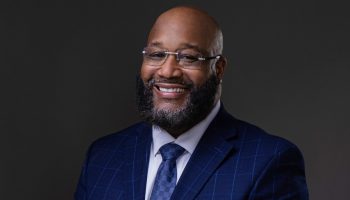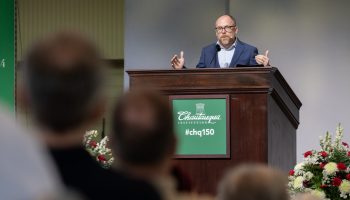At 9:42 a.m. on Sept. 11, 2001, the national operations manager of the U.S. Federal Aviation Administration invoked SCATANA — the emergency preparedness plan for the “Security Control of Air Traffic and Air Navigation Aids.”
By then, American Airlines Flight 11 had been flown into the north tower of the World Trade Center complex in Manhattan at 8:46 a.m. United Airlines Flight 175 had been flown into the WTC’s south tower at 9:03 a.m.
And outside Washington, D.C., American Airlines Flight 77 had been crashed into the Pentagon at 9:37 a.m., prompting SCATANA to be operationalized for the first time in history. At 10:03 a.m., United Airlines Flight 93 would crash into a field near Shanksville, Pennsylvania.
SCATANA prescribed the joint action required of the FAA, the Federal Communication Commission and the Department of Defense. Every FAA facility was ordered to instruct all aircraft to land at the nearest airport.
The FAA’s associate administrator for air traffic services during the 9/11 attacks — Chautauquan Steven J. Brown — will conclude the Chautauqua Women’s Club’s 2016 Contemporary Issues Forum series with a talk titled “The Impact of 9/11 Attacks 15 Years Later,” at 3 p.m. on Saturday at the Hall of Philosophy. He will demonstrate how his lifelong experience in aviation aided his decision-making as the head of FAA’s air traffic services during the immediate aftermath of the attacks.
For six years, from 1998 to 2004, Brown managed U.S. air space for the FAA.
“For three years prior to 9/11, it was normal,” he said. “I was working daily with the airlines, military and private companies making sure it worked efficiently in good weather and bad. The rules and regulations supported economic outcomes. After 9/11, my job really became a national security job, so there was a dramatic change.”
Brown said no one had ever before contemplated shutting down the air traffic control system, which had been created in the 1920s and grown increasingly complex, yet it was shut down for five days.
“When I did shut it down, I thought that was the hard part,” he said. “The hard part was getting it started.”
On Saturday, Brown will provide examples of arguments he used to convince national security officials to restart air traffic services incrementally. He said the system was initially started after four days, but it was not fully restored until Christmas, four months later.
According to Brown, at any time 6,000 aircraft are being controlled in the United States. On 9/11, he had 38,000 air traffic controllers doing this work and covering a considerable portion of the globe.
“A lot of people don’t know how big our air space is,” Brown said. “It’s allocated by international treaty. On its far western edge, American airspace starts in Guam; that’s two-thirds of the Pacific. On the eastern side it extends to Bermuda, which is a third of the Atlantic. In the south it’s down to the Caribbean, and in the north it goes all the way to the North Pole. I like to say the sun never sets on the U.S. airspace system. We have the largest system in the world by far.”
To illustrate the implications referred to in the title of his talk, Brown said he will use the week of the 9/11 attacks, when he was trying to find a balance between security and freedom of movement. He said his second three-year tenure at the FAA was about striking this balance when threats to national security were constantly changing.
“The NSA and all intelligence agencies were institutionally embarrassed by 9/11,” Brown said. “All their resources had been deployed yet they were unsuccessful, so it was embarrassing and threatening. To oversimplify, their view was: If nothing moves we’ll be secure; now that it’s shut down, keep it that way. By default, my job became advocating for restoring it to full capacity as much as possible. I was in the Situation Room in the White House regularly talking with admirals and generals about how to strike that balance.”
The average traveler prefers a predictable airport security process so that they have an easy, experience and can get through it quickly. According to Brown, those charged with safeguarding the security of air travelers — including the Transportation Security Administration, which was established in response to the 9/11 attacks — want to randomize the process, making it unpredictable.
“There’s a reason why the security protocol changes and isn’t predictable,” Brown said.
Based on the intelligence it gathers, the government becomes aware of threats and must counter them in order to prevent attacks.
“In spite of the 9/11 attacks, we were not only able to restore the system with new security protocols, but at the same time we were able to modernize and update it,” Brown said. “That’s a day-to-day task. We have by far the safest aviation system in the world. It’s not just the commerce; it’s the confidence that people can travel safely. So 9/11 was a big shock, but we recovered and are still able to modernize and keep it the safest system.”
In September 2004, Brown left the FAA for the National Business Aviation Association, where he is currently chief operating officer. NBAA represents the aviation interests of 11,000 companies that own or operate general aviation aircraft, or are involved with business aviation.
Originally from Texas, Brown comes by his passion for aviation naturally. He said his father was a Naval pilot who flew Berlin airlift transport aircraft during the Korean War. Before he was born, his mother was a flight attendant with American Airlines. He wasn’t engaged in flying until his dad bought a small, four-passenger piston airplane when he was 15.
“He let me steer,” Brown said. “At some point I got bit by the bug, so ultimately I became a pilot.”
At Texas A&M, where he earned a bachelor’s degree in business management and took political sciences courses with Phil Graham before Graham became a U.S. senator, Brown joined a flying club. He said two business professors trained him and became his mentors. As an undergraduate, Brown passed the exams for the different levels of pilot licenses. Later he was certified by the University of Southern California as a qualified aviation accident investigator.
After Brown worked his way up to air taxi pilot and flight instructor and began teaching adults, he wanted to learn how he could teach more effectively. With the money he was earning, he was able to pay for his master’s in industrial education at Texas A&M University. He would also go to Penn State and the University of Virginia, where he graduated from their executive management programs.
At Texas A&M University, Brown learned the theory of education and testing — measurement.
“I taught for two years after I graduated. I’d figured out by the time it was over, that there was a supply of pilots from the Vietnam War, so to earn a living I had to do something else,” he said. “So I went into business on the nonprofit side, starting with the Aircraft Owners and Pilots Association. I’ve done academic, government and business lobbying, but I haven’t homesteaded in any of them.”
At AOPA, he was senior vice president of government and technical affairs. Then at the National Aeronautic Association, he served as president.
Brown said he translated his interest in teaching to lobbying.
“People see it as a dirty word, but really all it is is educating elected officials,” he said. “They, [congressional] members, have about six staffers, so they’re heavily dependent on lobbyists. Good politicians get their information from diverse sources. Only if the politicians let themselves be controlled by lobbyists are they [actually controlled by them]. Lobbyists can be a resource.”
When he went to the FAA, Brown said his core belief was that it’s important for people in the private sector to take their experience to government and move in and out of it.
“I think the country would be stronger if more citizens spent time working in government, to understand how it works and to contribute to it,” he said.




